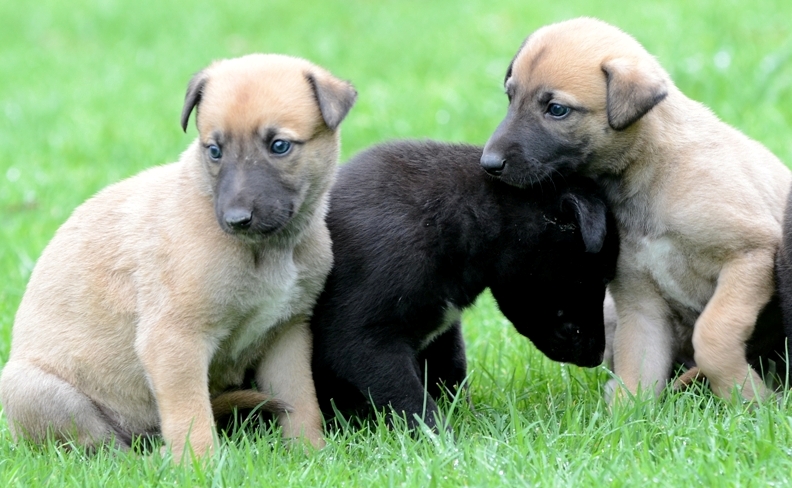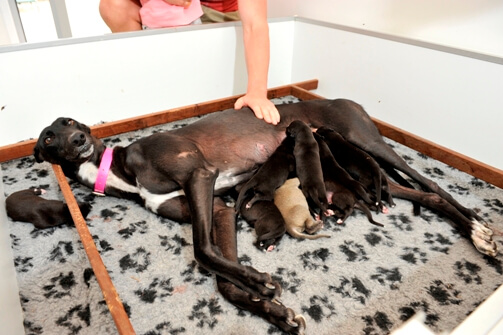
On this page you will find:
- How to become a breeder
- Understanding the costs

How to become a breeder
Breeding greyhounds is an area of the sport that requires extensive knowledge, lots of hard work and true passion. Breeding the next generation of champions is more than just good luck – it involves planning, research and exceptional care of the breeding female and the litter.
Before you can breed greyhounds you must first be a registered breeder with GRV. To do this you must:
- submit an application to be a breeder through your FastTrack account, and
- successfully complete the current Breeders Education Program (Program).
The Program contains eight units covering topics such as developing and running a breeding program, and caring for your female throughout pregnancy, whelping and raising a litter of pups.
As well as providing practical information on topics such as setting up a whelping kennel, signs of whelping and puppy worming, the Program is designed to also give a new breeder insight into the commitment required and an understanding of the responsibilities and obligations involved in breeding a litter. This includes the paperwork and record-keeping requirements, as well as providing information about each important stage in the process.

Understanding the costs
Experienced breeders estimate that it can cost $10,000 – $15,000 to breed and raise a litter of pups to the age of 16 weeks, depending on the sire selected and how much involvement the breeder has and the number of pups born.
Key costs include:
- sire service fees;
- artificial insemination veterinary fees;
- registration and administration fees;
- feed costs;
- worming and vaccination costs;
- veterinary costs associated with caring for the brood (before and after) and her litter.
There are also the facility costs for whelping and raising any litter that are often not accounted for. These include:
- the whelping box;
- bedding materials;
- temperature control (heat in winter and cooling in summer); and
- a whelping kennel and attached yard.
Breeding greyhounds is an area of the sport that requires extensive knowledge, dedication, commitment and true passion. Successful breeders rely on more than just good luck –planning, extensive research and detailed record-keeping are just some of their tools for success.
One cost often underestimated is time. Whelping and raising a litter of pups requires a significant commitment of time, every day, for many months. Time is spent cleaning up beds and yards, preparing meals, worming, clipping nails, picking up feed supplies, playing games and simply watching, patting and cuddling puppies. It is not for those who think they might make a quick profit.
It is understandable that some breeders are not able to commit the time necessary and will instead rely on someone else to whelp and raise their pups. This will make breeding a litter more expensive; however, it may be the best decision for you if the person is an expert in whelping and raising their litter.
Breeders who rely on other parties to do the hands-on work with their broods and pups should ensure they remain involved as much as possible to ensure that they receive high standards of care and attention. Researching the options available to you is an important part of making decisions about your role as a breeder.
For more information please read our Thinking About Breeding Greyhounds booklet on the Breeder Resources page.
Top Victorian greyhound breeder Barry Smith has bred many topline greyhounds through his ‘Mepunga’ bloodline. Here he provides a valuable insight into his successful breeding practices.


